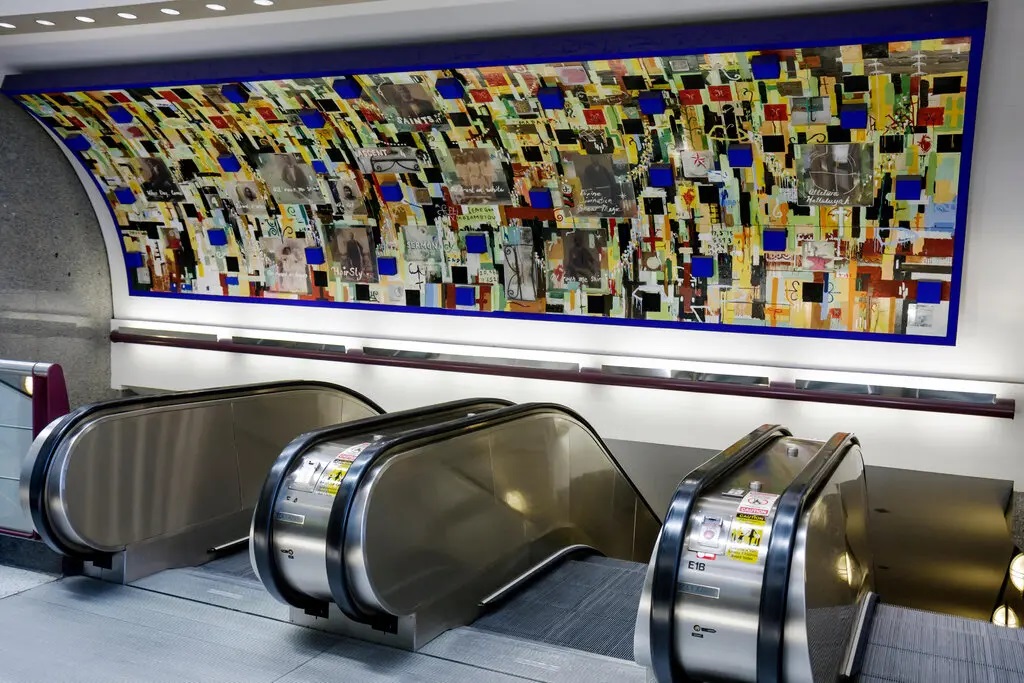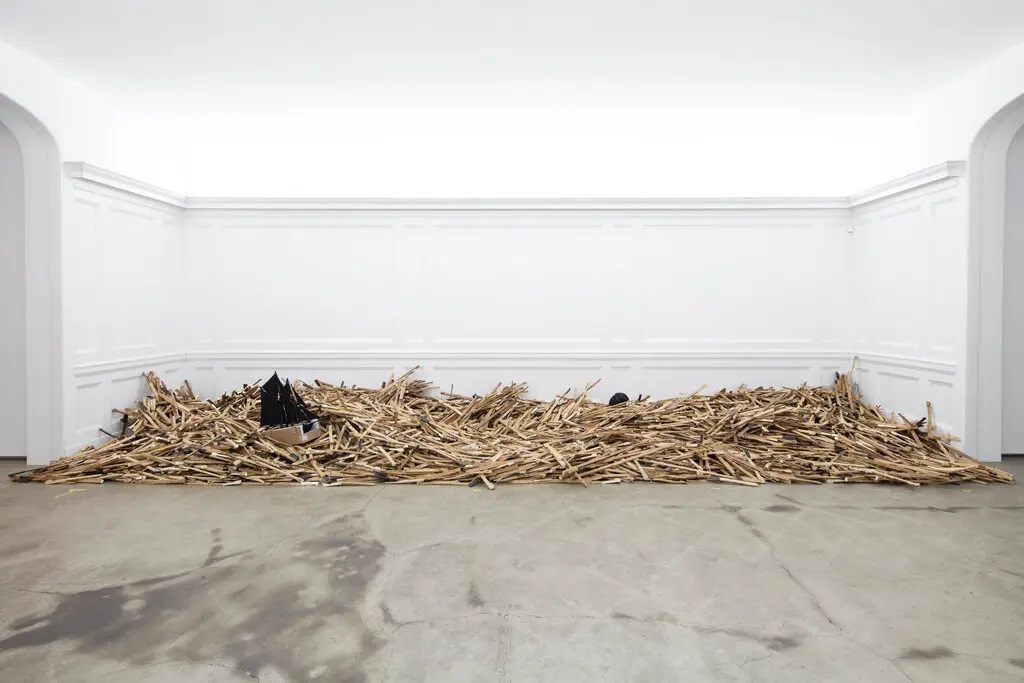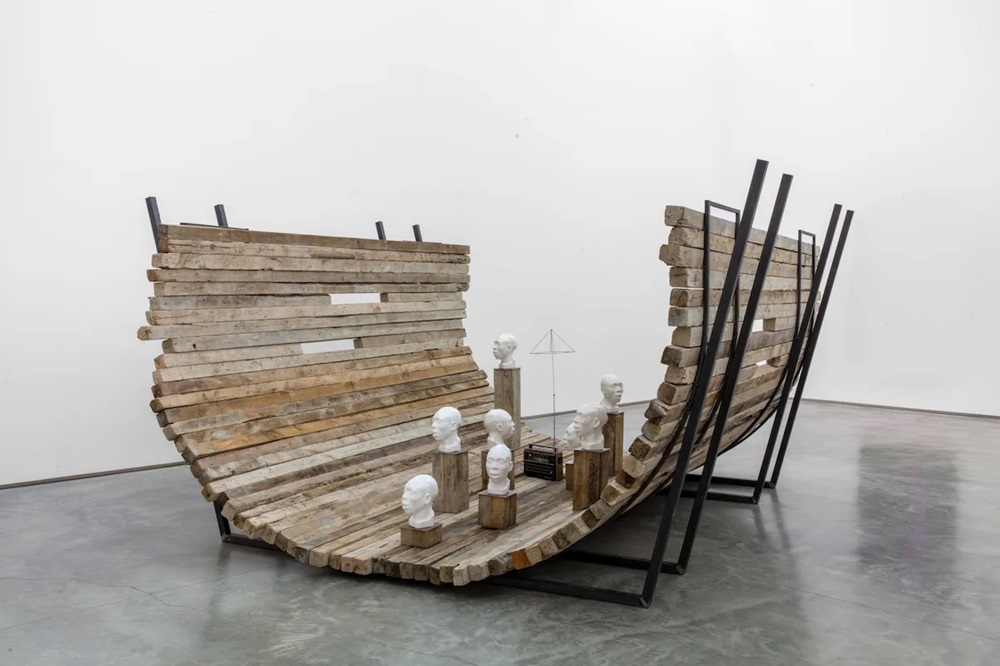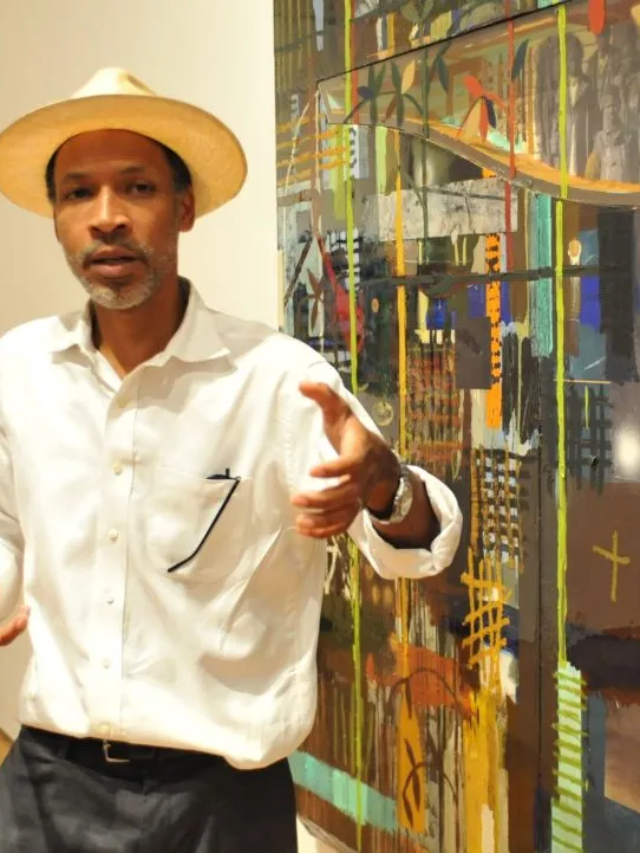American contemporary artist Radcliffe Bailey is well-known for his multifaceted style, which combines aspects of painting, sculpture, photography, and found materials. He was reared in Atlanta, Georgia, after being born in Bridgeton, New Jersey, in 1968. Bailey draws influence from African American history and culture for his works, which frequently address memory, ancestry, and identity themes.
Bailey’s cultural background and life experiences form a strong foundation for his artistic work. He frequently combines symbolic images, such as maps, musical instruments, and historical relics, to examine the complexity of African American identity and generate a feeling of collective memory. Throughout his career, Bailey has had numerous exhibitions of his artwork at galleries and museums domestically and abroad. He has been recognised for his services to the art world with multiple accolades and prizes, such as the James Weldon Johnson Legacy Award for Artistic Excellence and the Joan Mitchell Foundation Award.
Bailey’s art celebrates the resiliency and inventiveness of African American communities while pushing viewers to consider the effects of migration, slavery, and diaspora. His striking and moving works of art never cease to move audiences worldwide and provoke essential discussions about social justice, society, and history.

Throughout his career, Atlanta, the city where Radcliffe Bailey was born and raised, served as a source of inspiration for the Georgia-born artist. His collage paintings and sculptural assemblages featured a variety of objects, including African figurines, family tintypes, and disassembled piano keys, all of which were used to explore the artist’s personal history as well as the broader joys and sorrows of the Black experience.
The artwork of Radcliffe Bailey became recognisable throughout the city. One of his public pieces is the mural “Saints,” a forty-foot collage created in 1996 that combines vibrant colour blocks with ancient family portraits and text that alludes to African and Black cultural icons. At Atlanta International Airport’s Hartsfield-Jackson, the piece is permanently on display.
“Atlanta has this interesting past that makes you want to dig deeper and understand what was once there, even though it may be covered,” Bailey
Radcliffe Bailey’s 2009–11 installation Windward Coast, one of his best-known pieces, has 35,000 piano keys on the ground with a Black man’s head poking out of the stack. The work highlights the precariousness of Black life, the anguish caused by slavery that endures through the ages, and the significance that sound and music have had for Bailey and other community members. It does this using a soundscape that rumbles like a conch shell.

‘Radcliffe Bailey likens his work to that of a storyteller, a conduit of voices and experiences that, while deeply connected to his personal life and African ancestry, speak to a universal story that resonates beyond racial and cultural boundaries. Using found objects, materials, and culturally charged imagery, Bailey layers memory over time to reawaken the past in the present and to illuminate commonalities within the human experience amid a sea of conflicting ideologies and contested histories. Within Bailey’s work, the idea of the vessel, as both container and vehicle, is repeated from inception to reception: the artist as a vessel of stories, objects and music as vessels of history and memory, and the representation of actual vessels, including slave ships. Furthermore, the viewer approaches Bailey’s work as a vessel of their references and experiences that influence how the work’s story is interpreted. As these bodies converge in the gallery space, passing and colliding, their contents spread, blend, and mutate like DNA, continually changing and migrating the story from one vessel to the next,’ writes Meggin Hicklin, exhibition program manager of Moss Arts Center.
Meggin Hicklin claims that the main narrative alludes to in this piece is the Atlantic slave trade, which involved the forced migration of Africans who were held as enslaved people and transported to the Americas and the Caribbean over the treacherous and frequently fatal Middle Passage. This is the agonising tale of millions of people, many of whose voices perished from sickness and starvation on the claustrophobic ships, and others drowned at sea; others managed to flee and sought refuge in places like the Great Dismal Swamp along the coasts of Virginia and North Carolina. It is a tale of African and European cultures’ confluence, unfathomable grief and uprooting, and hope, space, and identity being reclaimed.
Bailey uses layers in her composition. Every element, including the sound, smell, and keys, entices us into the narrative by sending a wave of allusions, memories, and symbolism. The way each viewer responds alters the story. However, according to Bailey, Windward Coast is not just regretting his ancestors’ Middle Passage voyage. Still, it’s a monument to optimism and tenacity in the face of overwhelming adversity, a metaphor for surrendering to a higher force, and an illustration of a little period of calm within mayhem.

His artworks frequently addressed the African diaspora, whether through voluntary migration northward after the Civil War or as slaves in earlier years. Mr. Bailey took offence at being labelled as a Southern artist or even a Black artist, even though he never left his adopted state of Georgia after relocating there as a youngster. In an interview with the magazine Bomb in 2013, he declared, “I don’t want to be the ‘other.’
What Bailey offers us with this work is a journey, one that weaves together the past and present, allowing us to straddle time and space and, as vessels ourselves, carry both the treasure and the baggage of history within us—in our music, our DNA, and our stories. Bailey does this through his poignant layering of history, memory, and imagination. We might be better able to comprehend and navigate the present if we could turn back time and travel through the currents of our own and other people’s tales.






